
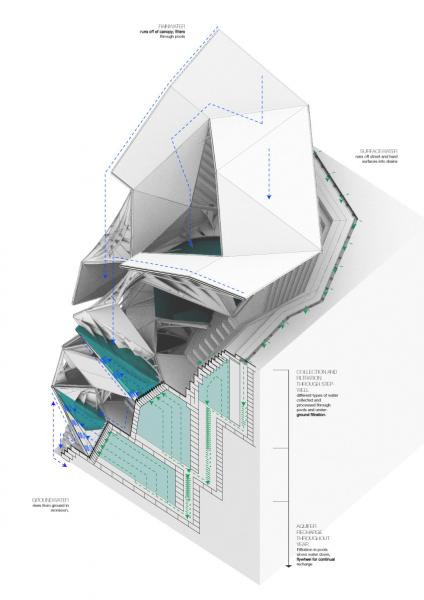

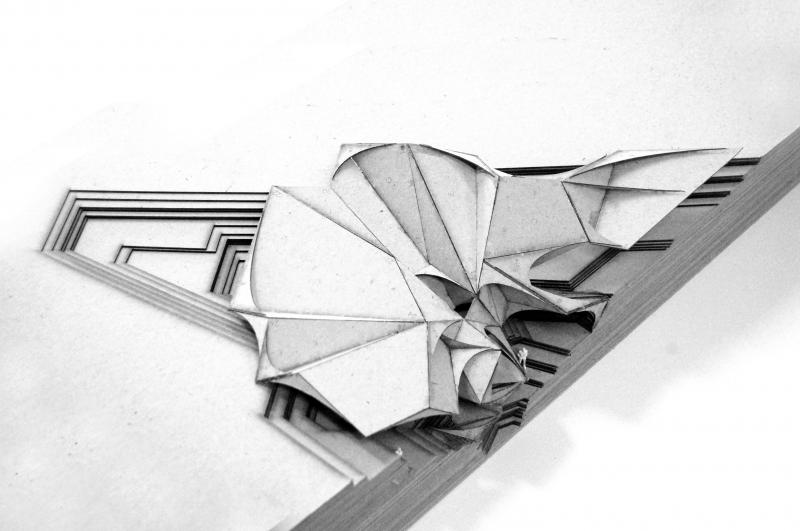
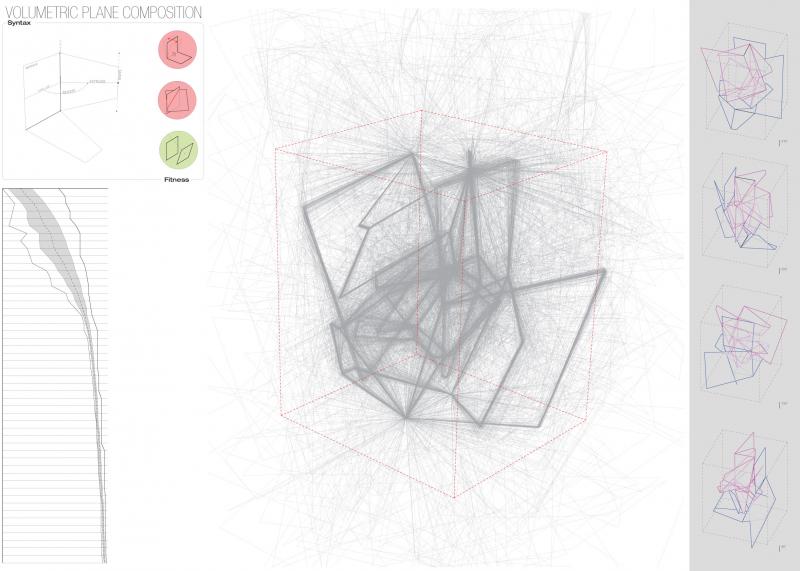
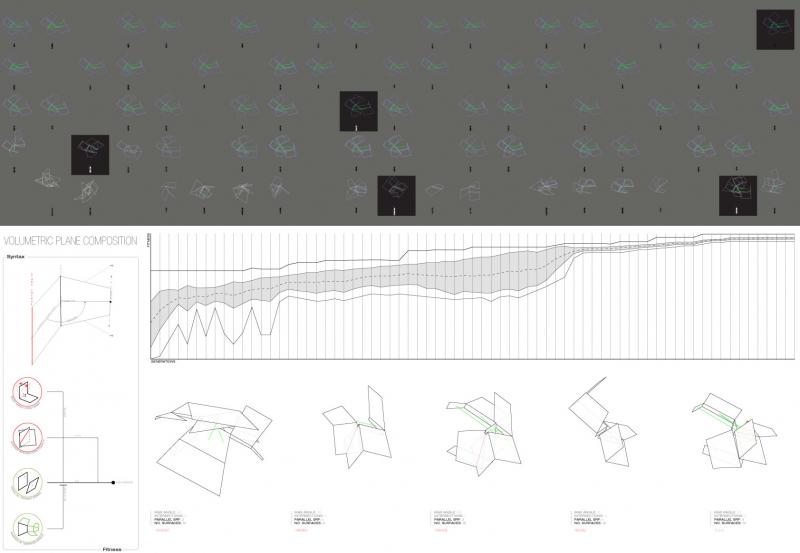
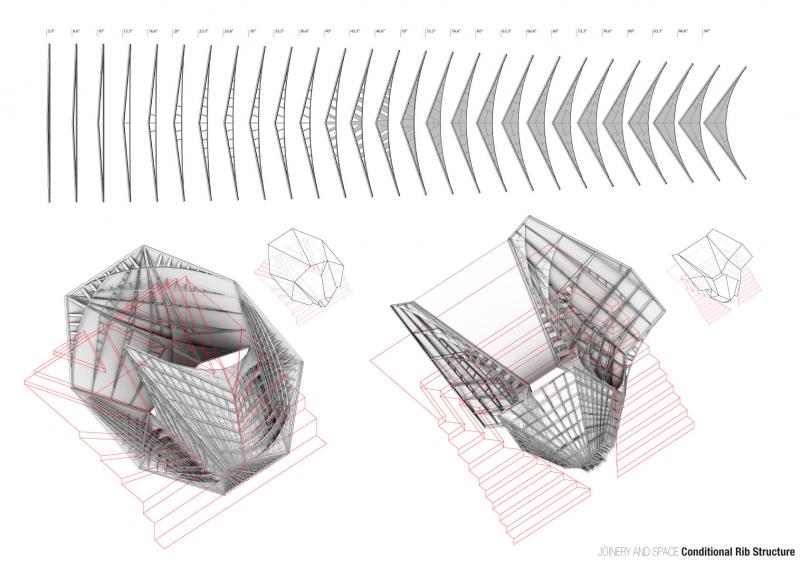
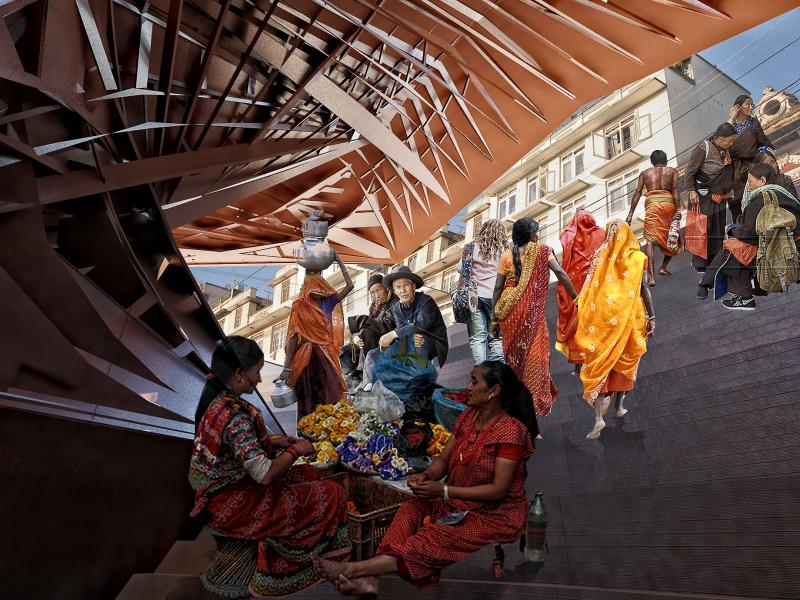
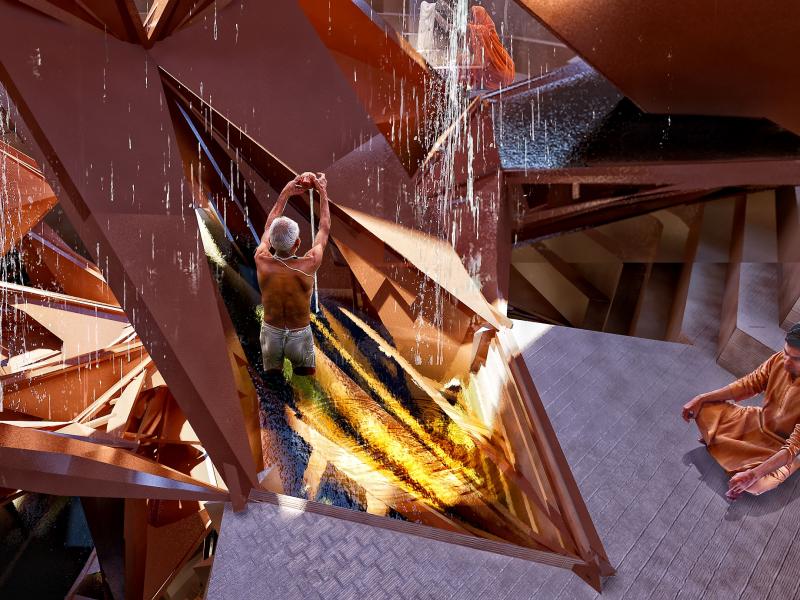
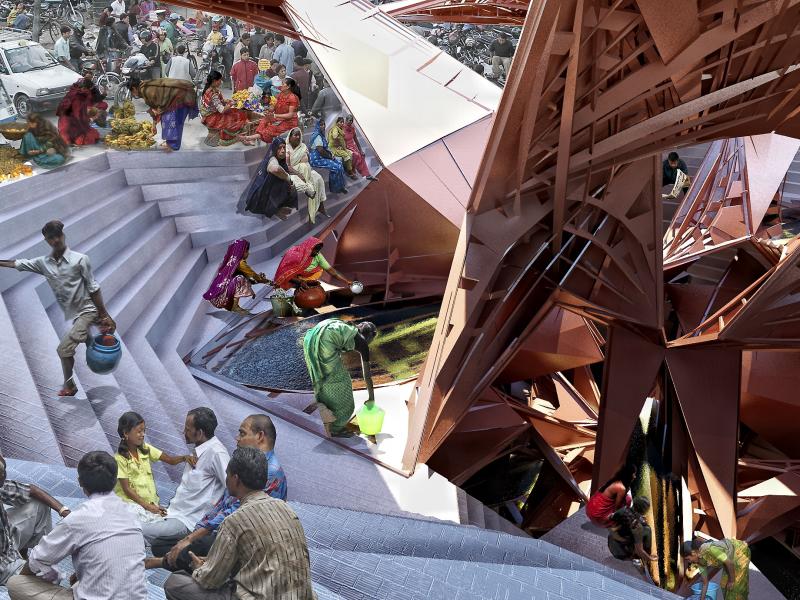
Augmented Urban Hydrology Drawing Water in Kathmandu The thesis of this project is that local knowledge of a specific ecology, embedded in a culture, can be reformulated to help that culture adapt to modern urban issues and create strong patterns for sustainable development in its society. To this end, this project will seek to reinvent the typology of the step well as a civic and community space for contemporary city of Kathmandu in order to address issues of water shortage and contamination in the city. Using language as a parallel to architecture in its ability to organise and express cultural values, this project will look at ways of linguistically structuring the search space of a genetic algorithm, to instrumentalise an exploration of cultural forms that communicate a connection with an augmented hydro-ecology.
Linguistics gives certain patterns for how languages develop and change over time, where the change in the form of a word result from the interaction between new and old forms of that word, as a typical growth process. This idea will be the basis of the design methodology of the project, a way of generating culturally specific types via a process of growth between old and new forms. This process of evolutionary composition in the geometry of the augmented stepwell typology will generate new forms and spaces that mediate between cultural grammars and ecological parameters. These partial solution steps lead to an integration of an augmented ecology in a cultural artefact, communicating a societal connection with water management. The building becomes a drawing, a representation of the relationship between cultural values and ecological factors in a way that instrumentalises the existing connection of the society to its environment, to address present water issues.